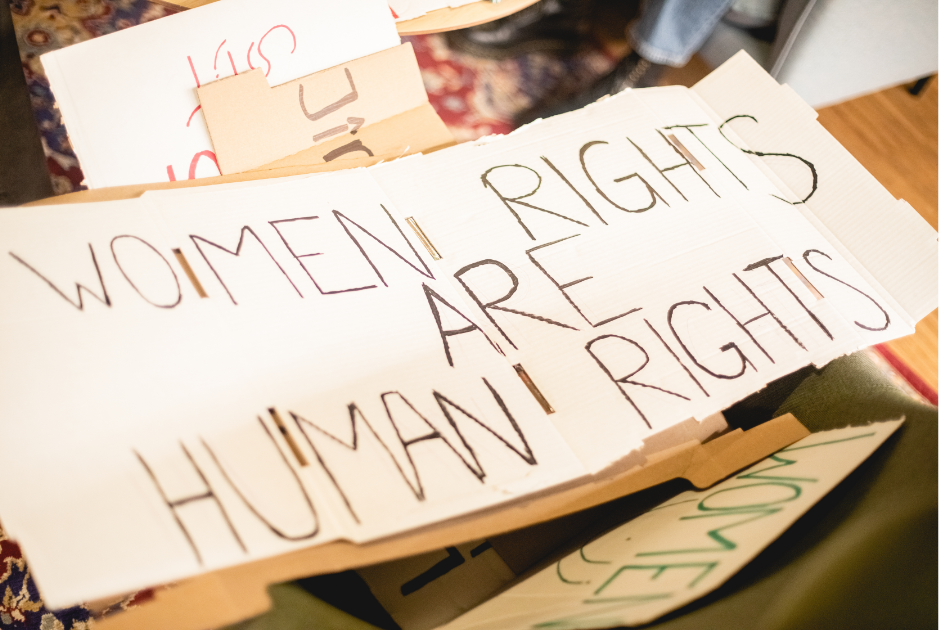"Period poverty" — being unable to regularly afford menstrual hygiene products — affects people around the world.
For the millions living in poverty, affording menstrual products is a huge challenge. And it's not just those living in developing countries who struggle. Advocacy group Plan International estimates that 1 in 10 girls in the U.K. — a wealthy, developed nation — are unable to afford sanitary products. In the U.S., 42 million women live at or near the poverty line, and since many public benefit programs consider menstrual products "luxuries," menstrual hygiene is unaffordable.
Countries are battling period poverty in various ways. India recently eliminated its 12% "luxury tax" on sanitary pads and tampons after a widespread campaign put pressure on the government.
In New York state, all public schools now provide free tampons and pads to students, and some schools in the U.K. are offering the same.
But the question of disposable sanitary product affordability also raises questions of environmental sustainability — is providing one-use pads and tampons really the best way to go?
Disposable menstrual products are an environmental blight.
In the U.S. alone, people use and throw away 7 billion plastic tampon applicators per year. According to the book "Flow: The Cultural History of Menstruation," the average menstruating person will throw away 250 to 300 pounds of disposable menstrual products during their lifetime. Considering that's about half the population, that's a whole lot of period trash flowing into landfills and polluting our oceans — trash that will long outlive the people throwing it way.
Image via AFP/Getty Images.
And it's not just the disposal of tampons and pads that's an issue. The production of non-reusable menstrual products also uses plastic, rayon, and other materials that cause harm to the environment.
Environmentally friendly menstrual products are also more affordable in the long run — potentially solving both economic and ecological problems.
There are three main reusable options for people with periods: washable pads, period underwear, and menstrual cups — and all three cost far less than pads and tampons in the long run.
Washable pads work the same way cloth diapers work and can be reused until the cloth wears out. Period underwear works similarly, with an absorbent pad built into panties. Both the pads and the undies can be washed in the washing machine.
Sun’s out, pads out. #gladragspads #breezy
A post shared by GladRags (@gladragspads) on
However, access to washing facilities may limit their viability for people living in poverty. Unclean pads can increase risk of infection.
Menstrual cups are another sustainable option. Inserted like a tampon, these silicon or latex cups collect blood; however, unlike a tampon, they can be worn all day or all night. And because they require a minimal amount of clean water to maintain, they are a good option for people living in places with limited sanitation.
“We have done a small pilot project at a refugee camp in Malawi. And another of our projects in a drought stricken area of Kenya showed that cups were a better option than cloth or washable pads due to the much smaller amount of water required to keep them clean and use them safely," a representative of The Cup Effect told Passblue. "If there is enough water to sustain life, there is enough water to use a menstrual cup safely.”
A post shared by Mooncup® menstrual cup (@mooncupltd) on
However, the cup is not a panacea for period poverty either because it does have limitations for certain people, including those who have experienced female genital mutilation (FGM).
So while there's no one perfect solution, looking beyond simply supplying more disposable sanitary products to those living in poverty may be a smart move both economically and ecologically.
Where people and governments can help is defraying the upfront cost of reusable products.
Reusable menstrual products do cost more out of the gate, but the cost is quickly recouped and long-term savings are significant. Product needs and usage varies widely. However, The Penny Hoarder estimates that using a menstrual cup can save $100 per year. And since menstrual cups can be used for 10 years, their environmental impact is minimal and tiny compared with disposable products.
However, that upfront cost makes reusable options out of reach for people who are struggling to make ends meet. A community-led initiative in New Zealand is battling period poverty by making menstrual cups more accessible. The initiative has given out more than 80 menstrual cups in the community since September 2017. Such projects can have a significant effect on people's lives.
A post shared by My Cup NZ (@mycupnz) on
Again, there is no single best solution to period poverty as each person will have specific circumstances and needs. However, a good percentage of the population — and our planet — could benefit from providing people sustainable, affordable options for managing menstruation.





 What was I doing again?
What was I doing again? A space waitress at work.
A space waitress at work.  Waking Up Funeral GIF
Waking Up Funeral GIF Rihanna Nails GIF
Rihanna Nails GIF Yoga pants.Image via Canva.
Yoga pants.Image via Canva. Our natural lashes are nice just the way they are!
Our natural lashes are nice just the way they are! One step forward, many steps back. Image via Canva.
One step forward, many steps back. Image via Canva.  Homelessness is especially rampant on the West Coast.Image via Canva
Homelessness is especially rampant on the West Coast.Image via Canva